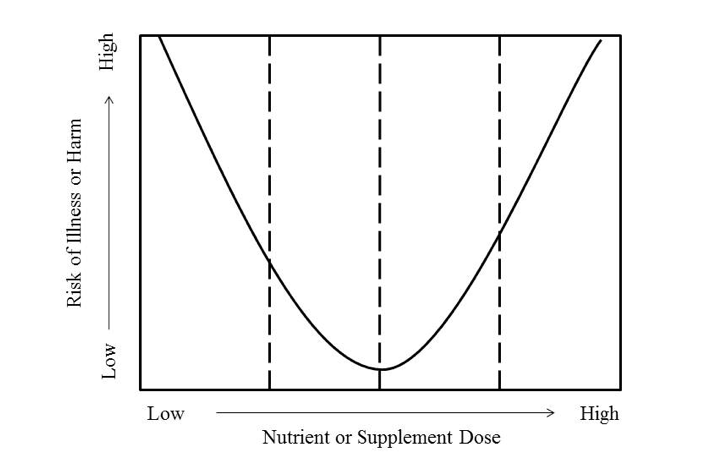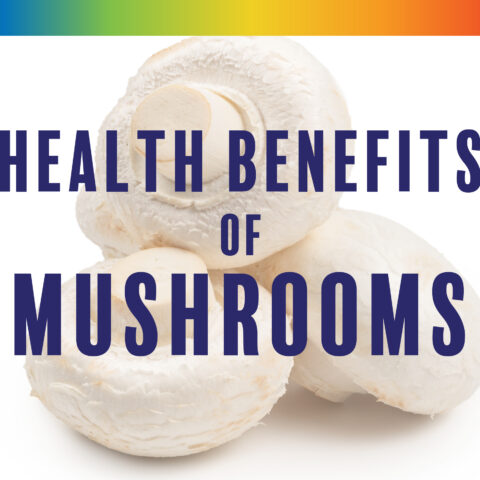Vitamin and nutritional supplements increase chronic disease morbidity (incidence) and mortality (death)

The nutritional supplement mentality
When you start eating Paleo, you simply won’t require vitamin or mineral supplements.13 In fact, except for fish oil and vitamin D, if you choose to take antioxidant and/or B vitamins, you will increase your risk of cancer, heart disease and dying from all causes combined.
One of my first jobs after high school was with the U.S. Forest Service on a wild fire crew in Markleville, California. During the summer of 1969 I bunked with eight other fire fighters in a rustic shack where we shared a communal kitchen and bathroom. As an 18-year-old barely out of my parent’s house, I had to buy groceries to last me a week before my days off. Being young and naïve, my food choices were not that good to begin with, but I did manage to purchase a box of Total Cereal, thinking this was a sensible food to help me obtain 100% of my daily vitamins and minerals.
Forty years later, I now realize that my naïve food choice constituted part of a much larger, unwise global perspective on diet that had emerged since World War II. Instead of focusing upon natural, healthy foods in my diet, I was suckered into focusing upon nutrients. Until only recently this perspective has dominated scientific as well as lay thought on healthful elements that made up nutritious diets.24, 30
To quote a recent study by Drs. Lichtenstein and Russell24 from Tufts University which appeared in the prestigious Journal of the American Medical Association, “The most promising data in the area of nutrition and positive health outcomes relate to dietary patterns, not nutrient supplements. These data suggest that other factors in food or the relative presence of some foods and the absence of other foods are more important than the level of individual nutrients consumed.”
If we read just a little between the lines, you can see that one of the key points brought up is that our overall nutritional quality is most dependent upon the foods we don’t eat.24, 30 No amount of vitamins, minerals or supplements added to breakfast cereals will ever make them a healthful food. Similarly, athletic drinks boasting of vitamins, amino acids and additives are nothing more than liquid candy. The food processing industry “fortifies” highly processed foods, like breakfast cereals, soft drinks, designer yogurts, granola, mayonnaise and orange juice with various nutrients and then re-characterizes them as “nutritious” or “heart healthy.” These marketing ploys not only cause widespread adverse health effects, but they also propagate the misleading idea that nutrients (vitamins and minerals) are more important than foods. We need to get back to healthy eating patterns characterized by traditional foods such as fresh fruits, vegetables, seafood and grass produced meats that have nourished and sustained our species from the very beginning.
When we eat real, living foods there is little or no need to supplement our diet with any vitamin, mineral or single nutrient thought to be protective against disease.13 The mentality that has dominated nutritional thought in the post-World War II era since vitamins and supplements became widely available was: if a little bit is good, more must be better.
If you visit your local pharmacy or health food store and decide to buy a mixed B vitamin formula, or even a multivitamin, you are immediately met with a staggering number of choices. Do you want the 10 mg version, the 50 mg form, or the 100 mg variety? You ask the clerk, and she says go with the 100 mg version because you’re getting more vitamins for your buck, and we all know that B vitamins are water soluble; so what you don’t use will simply be excreted in your urine. You agree, and don’t give it a second thought.
Evolutionary insight
If we follow the evolutionary template, it will provide us guidance about all aspects of healthful human diet, including vitamin and nutritional supplements. For our hunter gatherer ancestors, micronutrients (vitamins, minerals, and phytochemicals) have always been consumed in a range of concentration that was available through diet only. Further, processed foods were not on the menu, nor were vitamin supplements or fortified foods. Accordingly, our ancestral vitamin, mineral and nutrient intake would have always fallen within a narrow range – not too low and not too high. Additionally, the relative levels of one B vitamin to another or any single nutrient to another1, 20, 21, 36, 38 would have also fallen within a range determined by the types of unprocessed plant and animal foods that were consumed. I can tell you right now that it would have been impossible for any hunter gatherer to ever obtain 10 times the DRI for any B vitamin, much less 100 times this value. Similarly, the natural ratio of one B vitamin to the next or any nutrient to another would never have been exactly one to one as it is in most modern vitamin formulations.
OK. What am I getting at? Paracelsus, one of the greatest Renaissance physicians of 16th century Europe is credited with this quote, “dose makes the poison.” And indeed, this ancient wisdom is now coming back to haunt us in the 21st century as we indiscriminately lace our food supply with artificially produced vitamins, minerals and supplements that we perceive to enhance our health and prevent disease. Below is a graph known as a “U” shaped curve that depicts how numerous isolated vitamin and mineral supplements affect health and well-being.9, 16 Notice that when nutrient intake is low it increases our risk for disease, but this really isn’t news to most of us. What may surprise you is that excessive intake of many so called, “safe” vitamins and minerals have increasingly been shown to be harmful and actually cause illness.

Our hunter gatherer ancestors rarely or never would have ingested too few or too many nutrients that caused disease by landing on either the left or right hand extremes of the “U” shaped curve. Prior to the Agricultural Revolution, it would have been difficult or nearly impossible for any forager to develop a vitamin or nutrient deficiency by falling on the left hand side of the curve. Wild plant and animal foods are rich sources of all known nutrients required for optimal human health. When these foods or their modern counterparts are regularly consumed, nutrient deficiencies never develop. Only in the post-agricultural period could people have wound up on the left side of the “U” shaped curve. Vitamin and mineral deficiencies became commonplace in early farmers as nutrient poor cereal grains replaced wild meats, fish, fruits and vegetables. With the industrial revolution and introduction of refined grains, sugars, vegetable oils, canned foods and eventually processed and junk food, the consumption of nutrient depleted foods became the norm. It’s high time that we return to the foods to which our species is genetically adapted – by doing so you will never have to worry about landing on the left side of the “U” shaped curve.
Nutritional Supplements: Too Much of a Good Thing
Perhaps more alarming to many of you is not the left side of the curve, but rather its right side. I realize that many of you may be taking high doses of B and antioxidant vitamins because you think they provide protection from cancer and heart disease. Nothing could be further from the truth, and in fact this practice will increase your risk of dying from cancer, heart disease and all causes combined. Except for fish oil and vitamin D, supplementation is a total waste of your time and money. It’s high time to dismantle the myth of nutrient supplementation as our guiding light to health and well-being and replace it with the truth of nutrient dense, “real” foods.24, 30
Folic acid supplementation and fortification
I have previously written an extensive blog post on folic acid supplementation. Starting in 1998 the U.S. Food and Drug Administration mandated that all enriched wheat flour was to be fortified with folic acid. Because most commercial wheat products (breakfast cereals, bread, cookies, cakes, crackers, doughnuts, pizza crust, hamburger and hotdog buns, wheat tortillas etc.) are made with enriched wheat flour, essentially the entire U.S. population began to consume folic acid in 1998. As I and others have pointed out this practice produced marginal reductions in neural tube defects, but moreover increased the risk for breast, prostate and colorectal cancers for the entire U.S. population.
Antioxidant Supplements do More Harm than Good
Of all the supplements people take, antioxidants are one of the most popular, particularly with seniors and cancer patients. The most commonly supplemented antioxidants are beta carotene, vitamin A, vitamin C, vitamin E and selenium. About 11% of the U.S. population supplement their diets with antioxidants on a daily basis, whereas this number rises to almost 20% in adults 55 years of age and older.27 A near universal perception with most antioxidant consumers is that these nutrients increase longevity and may prevent cancer, heart disease and whatever else ails them.34, 35 It goes without saying – more is almost always thought to be better.
Let’s examine the “U” shaped curve once again. If people are deficient in these nutrients, there is little doubt that health will suffer. On the other hand more is definitely not better. Biological systems, like our bodies operate optimally when nutrients are supplied to them in the ranges for which they were designed. If you underinflate a tire, your car performs poorly – if you overinflate it, the tire ruptures. Just like tires, our body’s natural defense against disease as well as the rate it ages is dependent upon just the right amount of antioxidants from our diet – not too little, but also not too much. I invoke the “U” shape curve and Paracelsus once again, “dose makes the poison.”
The idea behind antioxidant supplements is that they capture and inactivate free radicals. These are highly reactive particles formed within our tissues as byproducts of metabolism. Excessive free radicals may damage cells and tissues in many ways. In animal experiments, high free radical production can promote cancer, heart disease and premature aging. Our bodies use dietary antioxidants to disarm free radicals and thereby prevent damage to cells. We also manufacture antioxidants within our bodies which work together with dietary antioxidants to keep free radicals at bay.
An often overlooked fact when it comes to free radicals is that they are necessary components of normal body function and a healthy immune system. Free radicals are used by the immune system to destroy cancer cells, kill invading microorganisms and detoxify cells. If we overload our bodies with massive doses of antioxidants, these essential functions are impaired as normal free radical activity is suppressed. Alternatively, supra normal doses of antioxidant vitamins upset other delicate aspects of cellular machinery which can actually turn antioxidants into pro-oxidants and ultimately increase free radical activity.
In 1994 one of the first inklings that high doses of antioxidants may be harmful surfaced with the completion of the ATBC study, a randomized, placebo controlled experiment of 29,133 male smokers.2 The idea behind this experiment was to determine if beta carotene or vitamin E supplementation could reduce lung cancer incidence in this group of heavy smokers. Following 5 – 8 years of supplementation, the researchers were shocked – treatment with beta carotene actually increased lung cancer rates by 16 –18% and overall death rates by 8%. Further, the men taking vitamin E suffered more hemorrhagic stroke than those taking placebo pills.2 A similar randomized placebo controlled trial known as the CARET study had been on-going concurrently with the ATBC study. In the CARET trial smokers and former smokers received beta carotene (20 mg) in combination with high doses of vitamin A (25,000 I.U.) for an average of five years.31 The men who received the antioxidants experienced a 28 % greater incidence in lung cancer and a 17% higher death rate than those taking an inert placebo pill. The CARET trial was immediately stopped when the results of the ATBC trial were reported.
In the years since the ATBC and CARET trials, more convincing data have verified the harmful effects of antioxidant supplementation. A 2007 meta analysis of 67 randomized controlled trials studies involving 232,606 participants showed that supplementation with either vitamin E, beta carotene, or vitamin A increased overall death rates.5 In 2008, a large randomized controlled trial (The SELECT study) of vitamin E and selenium supplementation in 35,533 men was prematurely halted when it was discovered that these two antioxidants increased the risk for prostate cancer and type 2 diabetes.23 A large m eta analysis involving 20 randomized controlled trials and 211,818 subjects revealed antioxidant supplementation (beta carotene, vitamin A, vitamin C, vitamin E and selenium) did not protect against gastrointestinal cancer, but rather increased overall death rates.3
A series of recent meta analyses (combined results from many studies) show that high vitamin E intake may be particularly dangerous. Dr. Miller and colleagues at Johns Hopkins School of Medicine analyzed 19 randomized trials that included more than 136,000 subjects and stated, “High-dosage (> or =400 IU/d) vitamin E supplements may increase all-cause mortality and should be avoided.” 28 In a meta analysis of 118,765 people and 9 randomized controlled trials evaluating the effects of vitamin E on stroke, Dr. Schurks and co-workers at Harvard Medical School concluded, “In this meta analysis, vitamin E increased the risk for haemorrhagic stroke by 22% . . . indiscriminate widespread use of vitamin E should be cautioned against.”37
Even the once acclaimed and vaunted vitamin C may have little therapeutic value for cancer or heart disease. In The Physicians’ Health Study, a randomized, placebo-controlled trial of vitamins E and C in 14,641 male doctors, the authors summarized, “. . . neither vitamin E nor C supplementation reduced the risk of prostate or total cancer. These data provide no support for the use of these supplements for the prevention of cancer in middle-aged and older men.”14 The situation for cardiovascular and vitamin C and other antioxidants appears to be the same as for cancer – they are a waste of your money as Dr. Bleys and colleagues have demonstrated in a meta analysis of 11 randomized controlled trials. His concluding remarks were as follows: “Our meta-analysis showed no evidence of a protective effect of antioxidant vitamin-mineral or B vitamin supplementation on the progression of atherosclerosis. . . Our findings add to recent skepticism about the presumed beneficial effects of vitamin-mineral supplementation on clinical cardiovascular endpoints.”7
Here’s one final point regarding vitamin C supplementation that may be of interest. If you are an athlete a series of recent human and animal experiments suggest that mega doses of vitamin C may have detrimental effects upon your performance.12, 15, 33 Surprisingly, supplementation with vitamin C may decrease training efficiency, cancel beneficial effects of exercise on insulin sensitivity, and delay healing after exercise. In addition, vitamin C supplementation did not decrease free radical damage to DNA that may occur following exercise18
These kinds of studies further cement the notion that fitness, vitality and well-being can never be achieved by single isolated nutrients, supplements or fortified foods. In fact, the available evidence conclusively shows these compounds are harmful by causing nutritional imbalances within our bodies.4, 6 The Paleo Diet has never been about supplements, but rather about real, wholesome living foods.
A closing thought. Supplementation can also be hazardous to our children’s health as well. A number of studies have demonstrated that multivitamin supplementation29 increases the risk for food allergies and asthma as do supplements of vitamin A, D, E and C.17, 22
Cordially,
Loren Cordain, Ph.D., Professor Emeritus
References
1. Alcock N, Macintyre I. Inter-relation of calcium and magnesium absorption. Clin Sci. 1962 Apr;22:185-93.
2. ATBC Cancer Prevention Study Group. The effect of vitamin E and beta carotene on the incidence of lung cancer and other cancers in male smokers. The Alpha-Tocopherol, Beta Carotene Cancer Prevention Study Group. N Engl J Med. 1994 Apr 14;330(15):1029-35.
3. Bjelakovic G, Nikolova D, Simonetti RG, Gluud C. Systematic review: primary and secondary prevention of gastrointestinal cancers with antioxidant supplements. Aliment Pharmacol Ther. 2008 Sep 15;28(6):689-703
4. Bjelakovic G, Nikolova D, Gluud LL, Simonetti RG, Gluud C. Antioxidant supplements for prevention of mortality in healthy participants and patients with various diseases. Cochrane Database Syst Rev. 2008 Apr 16;(2):CD007176.
5. Bjelakovic G, Nikolova D, Gluud LL, Simonetti RG, Gluud C. Mortality in randomized trials of antioxidant supplements for primary and secondary prevention: systematic review and meta-analysis. JAMA. 2007 Feb 28;297(8):842-57. Review. Erratum in: JAMA. 2008 Feb 20;299(7):765-6
6. Bjelakovic G, Gluud C. Surviving antioxidant supplements. J Natl Cancer Inst. 2007 May 16;99(10):742-3
7. Bleys J, Miller ER 3rd, Pastor-Barriuso R, Appel LJ, Guallar E Vitamin-mineral supplementation and the progression of atherosclerosis: a meta-analysis of randomized controlled trials. Am J Clin Nutr. 2006 Oct;84(4):880-7
8. Bolland MJ, Avenell A, Baron JA, Grey A, MacLennan GS, Gamble GD, Reid IR. Effect of calcium supplements on risk of myocardial infarction and cardiovascular events: meta-analysis. BMJ. 2010 Jul 29;341:c3691. doi: 10.1136/bmj.c3691
9. Chiang EC, Shen S, Kengeri SS, Xu H, Combs GF, Morris JS, Bostwick DG, Waters DJ.Defining the Optimal Selenium Dose for Prostate Cancer Risk Reduction: Insights from the U-Shaped Relationship between Selenium Status, DNA Damage, and Apoptosis. Dose Response. 2009 Dec 21;8(3):285-300
10. Cho E, Hunter DJ, Spiegelman D, Albanes D, Beeson WL, van den Brandt PA, Colditz GA et al. Intakes of vitamins A, C and E and folate and multivitamins and lung cancer: a pooled analysis of 8 prospective studies. Int J Cancer. 2006 Feb 15;118(4):970-8.
11. Clarke R, Halsey J, Lewington S, Lonn E, Armitage J, Manson JE, et al. Effects of lowering homocysteine levels with B vitamins on cardiovascular disease, cancer, and cause-specific mortality: Meta-analysis of 8 randomized trials involving 37 485 individuals.Arch Intern Med. 2010 Oct 11;170(18):1622-31.
12. Close, G. L., Ashton, T., Cable, T., Doran, D., Holloway, C., McArdle, F., et al. (2006). Ascorbic acid supplementation does not attenuate post-exercise muscle soreness following muscle-damaging exercise but may delay the recovery process. Brit J Nutr 2006; 95:976-981.
13. Cordain L. The nutritional characteristics of a contemporary diet based upon Paleolithic food groups. J Am Neutraceut Assoc 2002; 5:15-24.
14. Gaziano JM, Glynn RJ, Christen WG, Kurth T, Belanger C, MacFadyen J, Bubes V, Manson JE, Sesso HD, Buring JE. Vitamins E and C in the prevention of prostate and total cancer in men: the Physicians’ Health Study II randomized controlled trial. JAMA. 2009 Jan 7;301(1):52-62. Epub 2008 Dec 9.
15. Gomez-Cabrera, M.-C., Domenech, E., Romagnoli, M., Arduini, A., Borras, C., Pallardo, F. V., et al. Oral administration of vitamin C decreases muscle mitochondrial biogenesis and hampers training-induced adaptations in endurance performance. Am J Clin Nutr 2008; 87(1), 142-149.
16. Gore F, Fawell J, Bartram J. Too much or too little? A review of the conundrum of selenium. J Water Health. 2010 Sep;8(3):405-16.
17. Greenough A, Shaheen SO, Shennan A, Seed PT, Poston L. Respiratory outcomes in early childhood following antenatal vitamin C and E supplementation. Thorax. 2010 Nov;65(11):998-1003.
18. Herbert, K., Fletcher, S., Chauhan, D., Ladapo, A., Nirwan, J., Munson, S., et al. (2006). Dietary supplementation with different vitamin C doses: no effect on oxidative DNA damage in healthy people. Eur J Nutr 2006;45(2): 97-104.
19. Herbert V. Staging vitamin B-12 (cobalamin) status in vegetarians. Am J Clin Nutr. 1994 May;59(5 Suppl):1213S-1222S
20. Johnson FO, Gilbreath ET, Ogden L, Graham TC, Gorham S. Reproductive and developmental toxicities of zinc supplemented rats. Reprod Toxicol. 2011 Feb;31(2):134-43.
21. Khan AT, Graham TC, Ogden L, Ali S, Salwa, Thompson SJ, Shireen KF, Mahboob M. A two-generational reproductive toxicity study of zinc in rats. J Environ Sci Health B. 2007 May;42(4):403-15
22. Kull I, Bergström A, Melén E, Lilja G, van Hage M, Pershagen G, Wickman M. Early-life supplementation of vitamins A and D, in water-soluble form or in peanut oil, and allergic diseases during childhood. J Allergy Clin Immunol. 2006 Dec;118(6):1299-304
23. Ledesma MC, Jung-Hynes B, Schmit TL, Kumar R, Mukhtar H, Ahmad N. Selenium and vitamin E for prostate cancer: post-SELECT (Selenium and Vitamin E Cancer Prevention Trial) status. Mol Med. 2011 Jan-Feb;17(1-2):134-43.
24. Lichtenstein AH, Russell RM. Essential nutrients: food or supplements? Where should the emphasis be? JAMA. 2005 Jul 20;294(3):351-8
25. Lin J, Lee IM, Cook NR, Selhub J, Manson JE, Buring JE, Zhang SM. Plasma folate, vitamin B-6, vitamin B-12, and risk of breast cancer in women. Am J Clin Nutr. 2008 Mar;87(3):734-43.
26. McCance DR, Holmes VA, Maresh MJ, Patterson CC, Walker JD, Pearson DW, Young IS; Diabetes and Pre-eclampsia Intervention Trial (DAPIT) Study Group. Vitamins C and E for prevention of pre-eclampsia in women with type 1 diabetes (DAPIT): a randomised placebo-controlled trial. Lancet. 2010 Jul 24;376(9737):259-66.
27. Millen, A. E., Dodd, K. W., & Subar, A. F. Use of vitamin, mineral, nonvitamin, and nonmineral supplements in the United States: the 1987, 1992, and 2000 National Health Interview Survey results. J Am Diet Assoc 2004;104:942-950.
28. Miller ER 3rd, Pastor-Barriuso R, Dalal D, Riemersma RA, Appel LJ, Guallar E. Meta-analysis: high-dosage vitamin E supplementation may increase all-cause mortality. Ann Intern Med. 2005 Jan 4;142(1):37-46
29. Milner JD, Stein DM, McCarter R, Moon RY. Early infant multivitamin supplementation is associated with increased risk for food allergy and asthma. Pediatrics. 2004 Jul;114(1):27-32.
30. Mozaffarian D, Ludwig DS. Dietary guidelines in the 21st century–a time for food. JAMA. 2010 Aug 11;304(6):681-2
31. Omenn GS, Goodman GE, Thornquist MD, Balmes J, Cullen MR, Glass A, Keogh JP, Meyskens FL, Valanis B, Williams JH, Barnhart S, Hammar S. Effects of a combination of beta carotene and vitamin A on lung cancer and cardiovascular disease. N Engl J Med. 1996 May 2;334(18):1150-5
32. Refsum H, Smith AD. Are we ready for mandatory fortification with vitamin B-12? Am J Clin Nutr. 2008 Aug;88(2):253-4.
33. Ristow, M., Zarse, K., Oberbach, A., KlÃting, N., Birringer, M., Kiehntopf, M., et al. Antioxidants prevent health-promoting effects of physical exercise in humans. Proc Natl Acad Sci 2009; 106(21): 8665-8670.
34. Rosenberg IH. Science-based micronutrient fortification: which nutrients, how much, and how to know? Am J Clin Nutr. 2005 Aug;82(2):279-80
35. Soni MG, Thurmond TS, Miller ER 3rd, Spriggs T, Bendich A, Omaye ST. Safety of vitamins and minerals: controversies and perspective. Toxicol Sci. 2010 Dec;118(2):348-55.
36. Seelig MS. Increased need for magnesium with the use of combined oestrogen and calcium for osteoporosis treatment. Magnes Res. 1990 Sep;3(3):197-215.
37. Schürks M, Glynn RJ, Rist PM, Tzourio C, Kurth T. Effects of vitamin E on stroke subtypes: meta-analysis of randomised controlled trials. BMJ. 2010 Nov 4;341:c5702. doi: 10.1136/bmj.c5702
38. Walter PB, Knutson MD, Paler-Martinez A, Lee S, Xu Y, Viteri FE, Ames BN. Iron deficiency and iron excess damage mitochondria and mitochondrial DNA in rats. Proc Natl Acad Sci U S A. 2002 Feb 19;99(4):2264-9.
39. Wu J, Lyons GH, Graham RD, Fenech MF. The effect of selenium, as selenomethionine, on genome stability and cytotoxicity in human lymphocytes measured using the cytokinesis-block micronucleus cytome assay. Mutagenesis. 2009 May;24(3):225-32




